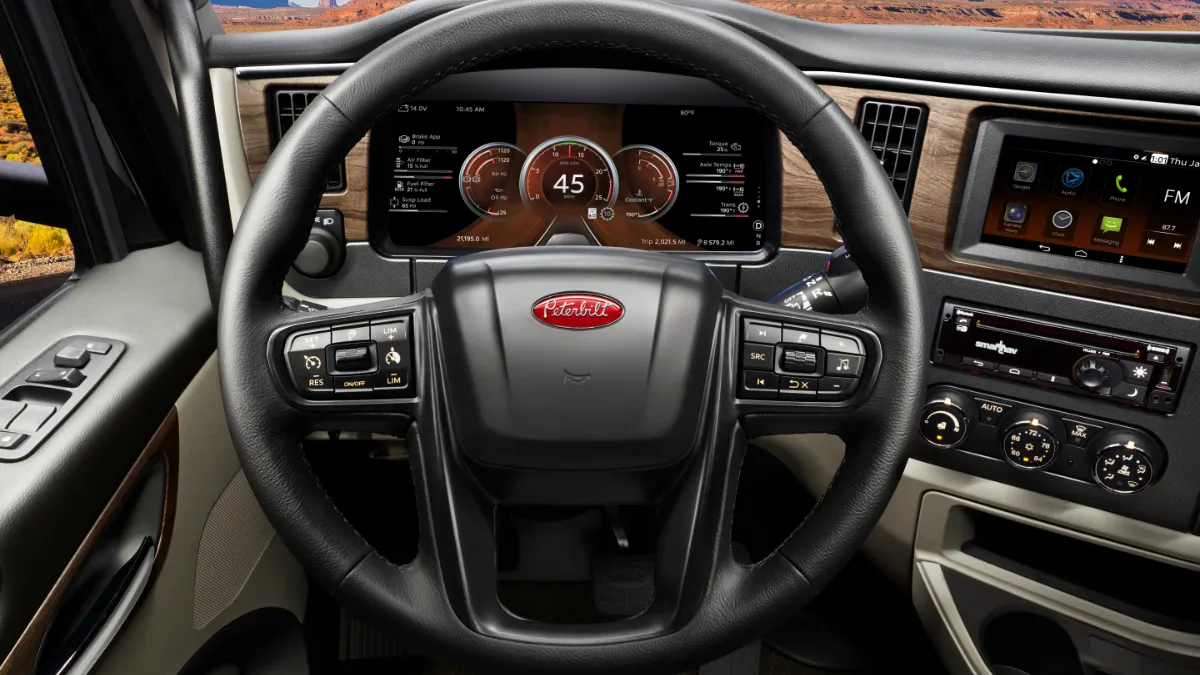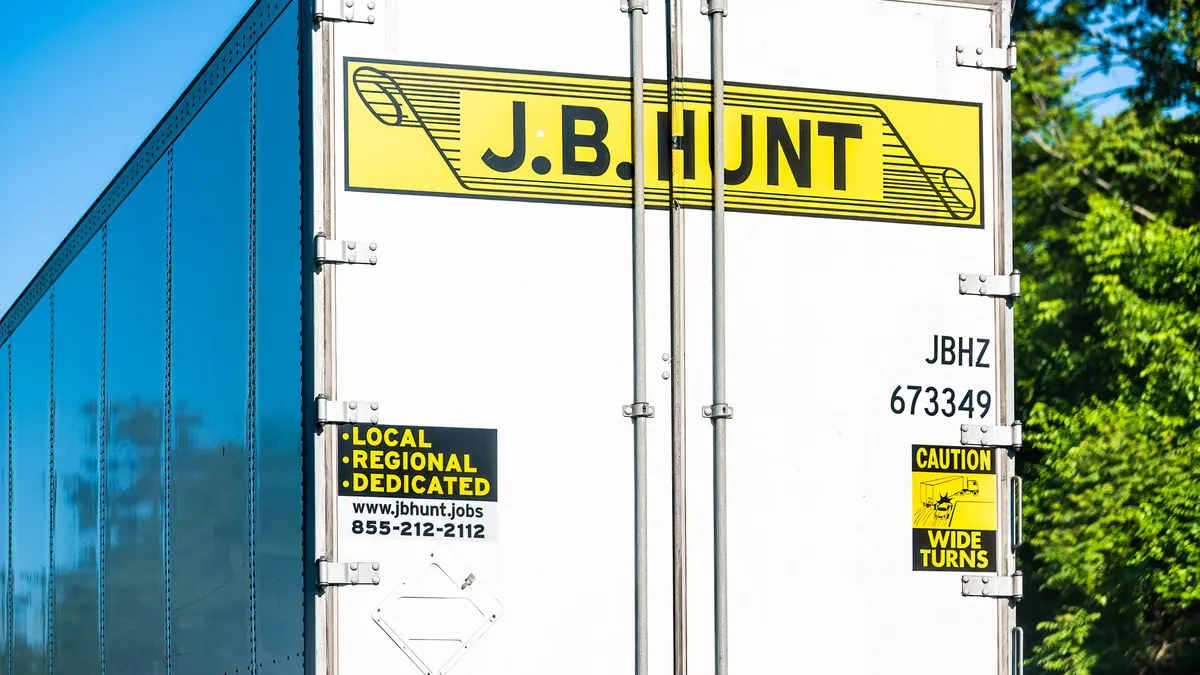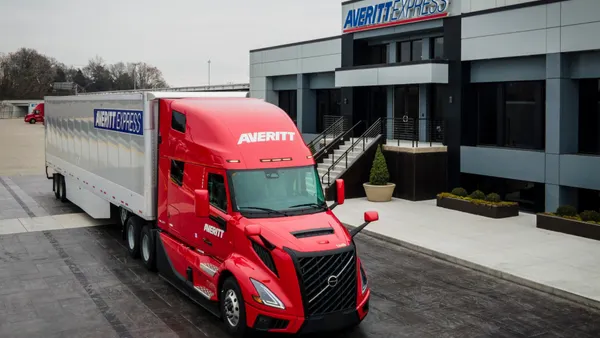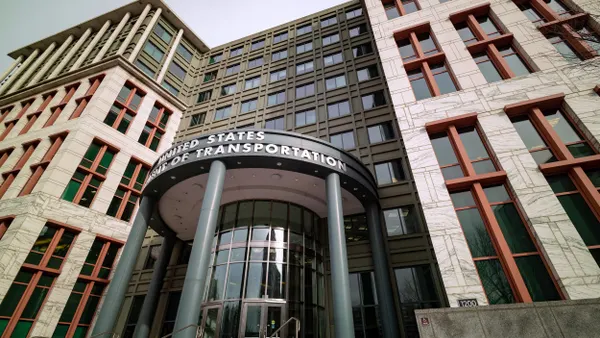Peterbilt claims it's providing a "new era of class" in the modernized Model 579. The truck has a quieter cab and sleeper, along with smart technology and better aerodynamics, the OEM said.
Improved comfort and a smoother ride stands to benefit drivers. But transport leaders have other incentives to invest in the latest equipment.
WorkHound surveyed drivers to understand their priorities when it came to signing and staying with one transportation company versus another. Equipment came in as the third most important factor, behind pay and people.
"A driver’s equipment is at the core of the job," said Max Farrell, CEO and co-founder of WorkHound. "It’s not only their tool to do the job, but often, their home."
At Smokey Point Distributing, a Daseke operating company, new drivers get to be part of the truck-selection process, choosing the color and brand of truck. Rick Williams, COO of Daseke, said it’s a unique approach to recruiting and retention that works well for the company.
The American Trucking Associations estimated in 2019 that the driver shortage has the potential to swell to more than 160,000 by 2028. So, recruiting and retaining drivers is critical. Offering new, comfortable and up-to-date equipment can go a long way to meeting a fleet’s need for drivers.
Attracting younger talent
When considering how to use equipment as a recruitment and retention tool, age plays an important role.
"Simply speaking, newer trucks do attract more talent," said Williams. "However, driver satisfaction with equipment depends largely on the demographic. For many drivers, up-to-date equipment does relate to satisfaction in terms of comfort, new technology, safety enhancements and other amenities."
Williams said the company's fleet is around 2.5 years old on average. "We see approximately 65% to 68% turnover, which is significantly lower than the industry average in the high 90s," he said. "Having a best-in-class age fleet is important to our recruiting and overall company goals."
"Simply speaking, newer trucks do attract more talent."

Rick Williams
COO of Daseke
Al Barner, senior vice president of business development at equipment leasing company Fleet Advantage, said that in the past 10 years, fleets have shortened up their equipment trade cycles.
"It used to be that transportation companies would run their trucks about 10 years," he explained. "Now that cycle is more in the three-to-five-year range, or 500,000 miles. Technology changes quickly, and drivers want trucks that are outfitted with all the latest features."
This includes the latest safety and maintenance features, which help keep drivers on the road and avoiding breakdowns. "Safety is table stakes," said Barner. "You have to prioritize that to be in the ball game."
Jonathan Shepko, interim CEO at Daseke, agreed.
"Operating with older equipment is a large business risk that can increase downtime and maintenance costs, ultimately impacting drivers’ earning abilities," he said. "It also creates a higher chance for truck abandonment, which comes with unbelievable overhead and headaches. If a fleet develops a reputation for neglecting the care and management of its equipment and drivers, it can make it very difficult to attract and retain top talent."
Bang for the buck?
Keeping equipment in the latest-and-greatest range does come at a price, however. Transport companies need to weigh the costs and benefits and determine if the price tag is worth it.
"It’s a balance," said Farrell. "For many companies, there is bang for the buck, but executives need to measure the [return on investment]."
This is not a simple equation, however, according to Williams. "ROI across recruiting and retention is soft and difficult to pinpoint," he said. "Trucks are only one part of the full picture, which includes factors like pay packages, culture and benefits like healthcare."
That said, Williams points to a tangible ROI from newer equipment in the form of things like reduced maintenance and improved safety.
"Safety is table stakes. You have to prioritize that to be in the ball game."

Al Barner
Senior Vice President of Business Development at Fleet Advantage
"There can be moments when a company gets direct feedback on equipment that can influence future decisions," he said. "For example, one of Daseke’s operating companies temporarily switched from mid-roof sleepers to tall standup sleepers because of a model change. After roaring positive driver responses, that company permanently transitioned to the new model."
Farrell added that companies need to treat drivers like talent and consider their qualitative feedback in the ROI formula.
"Ask them what features they want and factor that into your buying decisions," he said. "There is value in multiple data points, and driver feedback on equipment should be one of them."
This is particularly poignant when looking at the predicted growth of the driver shortage.
"Drivers are proud of what they do and want to be held in high esteem," said Barner. "If you want to recruit and retain drivers, provide them with good, reliable equipment."









